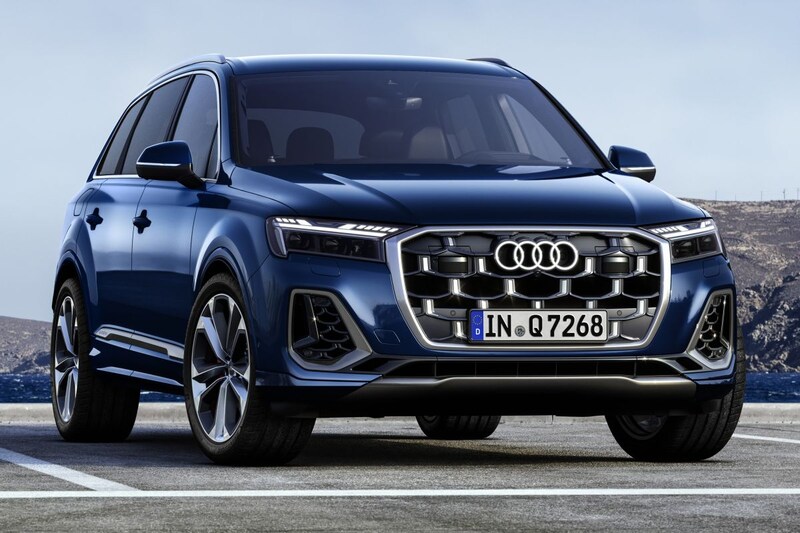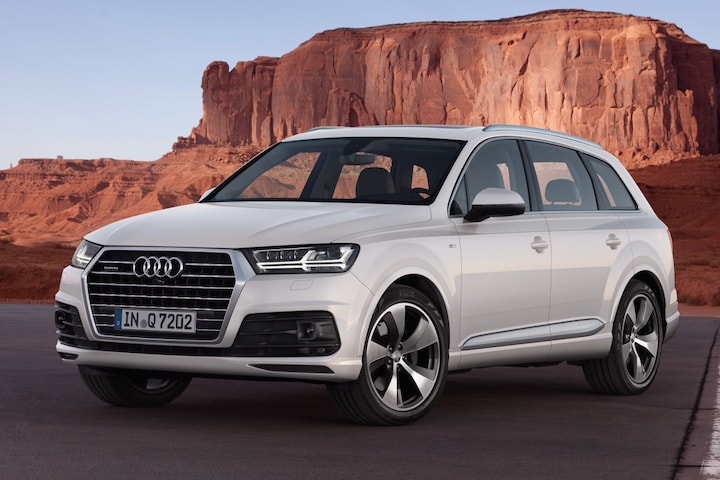SQ7 with mighty 507 hp V8 continues to exist


Audi is giving its largest SUV a facelift for the second time. This is more drastic than ever at the front, while remarkably little changes at the rear.
The current generation of Audi Q7 has been around for many years. The model was presented nine years ago this month in Detroit and ended up on the cutting table in 2020 for a thorough facelift. During that secondary session, the entire rear was renewed. The angular, large rear lights made way for significantly flatter ones, the Q7 received a larger grille and completely new headlights and an almost completely new interior. 2024 is not the year in which Audi replaces the nine-year-old Q7, but the year in which the car is facelifted again.

The second generation Audi Q7 as it was presented in 2015.
The second facelift that the Audi Q7 is undergoing is again quite drastic, but not as intense in appearance as that of four years ago. With the exception of the front, because that has been extensively renovated. The grille is not only different in shape, but also filled in differently. Depending on the version chosen, you get a scale-like pattern, the parts of which Audi itself describes as ‘drop shapes’, L-shaped or S-shaped elements. The grille and its decorative edge now extend to the edge of the hood and also connect completely to the headlights. Those headlights are completely new. In a sense, Audi combines the past and the present. For example, as with many recent models, the lighting is actually divided over two layers. The LED daytime running lights that were previously located at the bottom of the headlight units are now located at the very top. The actual headlights are in the same unit, but underneath. The spur on the corners of the now higher light units survives the facelift.

The Audi Q7 after the 2019 facelift.
Don’t like the LED signature of the daytime running lights? No problem, it is adjustable – just like the LED signature of the rear lights. There are four versions to choose from. The rear lights can also be ordered with OLED technology for the first time. Matrix LED headlights and HD matrix LED headlights are optional.
More optical news? Certainly. The complete front bumper is new and the reflectors at the bottom of the rear have also been renewed. Also striking: Audi says it has used significantly fewer frills in the design. The Q7s without the S Line package have more contrasting color decorative elements in the bumpers and at the bottom of the doors. All Q7s have visible exhaust pipes at the bottom of the buttocks and more prominent openings in the front bumper. In addition to the Black pack, fans of black accents can also opt for the Black Plus pack. No facelift without new wheels and so Audi is also bringing them together with new finishing options for the interior to the upgraded Q7. Audi is also bringing new applications to the infotainment system and adding functions to the digital instrument cluster. Once again, the Q7 is available with air suspension in various degrees. Little else of note changes in the interior.

Audi Q7 as a sporty SQ7.
engines
Audi is once again putting a collection of mild-hybrid petrol and diesel engines on the international engine list. The 45 TDI and 55 TDI are successively 231 hp and 500 Nm and 286 hp and 600 Nm strong 3.0 V6 TDIs. On the petrol list we find an at least as mild-hybrid 3.0 V6 petrol engine. It is called 55 TFSI, has 340 hp and 500 Nm and helps the Q7 reach a speed of 100 km/h in 5.6 seconds. All machines are linked to an eight-speed Tiptronic automatic transmission. Perhaps unnecessarily: four-wheel drive is standard. Audi has not yet said anything about the plug-in hybrid versions – which did exist of the Q7.
SQ7
The Audi SQ7 is again the absolute top version. The SQ7 started its European existence with a diesel engine, but now has a powerful 4.0 V8 petrol engine. That machine survives the second side point session. It is again 507 hp and 550 Nm strong, powerful enough to help the colossus reach a speed of 100 km/h from a standstill in 4.1 seconds. Its top speed is electronically regulated to 250 km/h. The eight-cylinder has cylinder deactivation, which means that the SQ7 uses only four cylinders under low load. That makes a difference.
– Thanks for information from Autoweek.nl
























